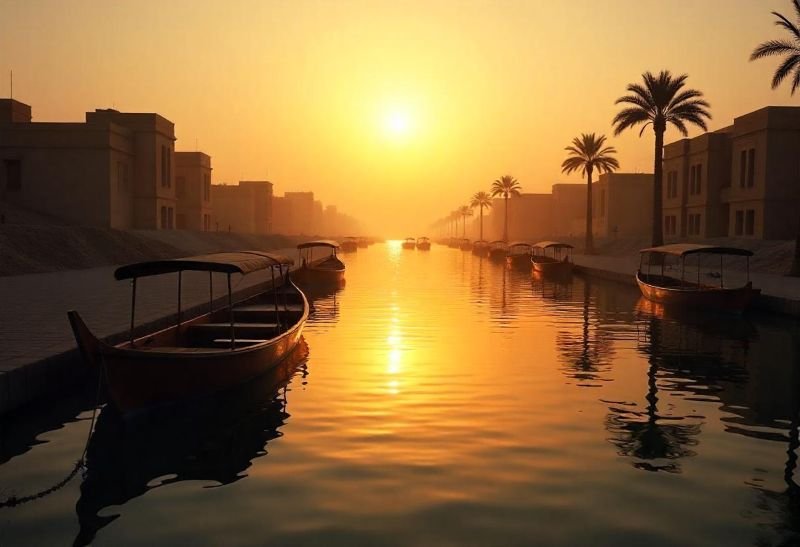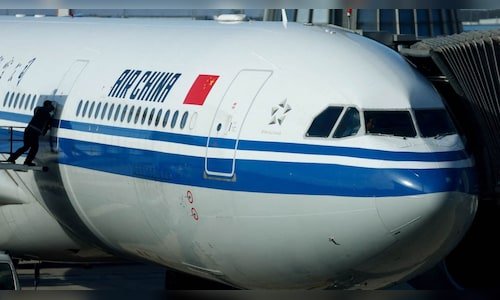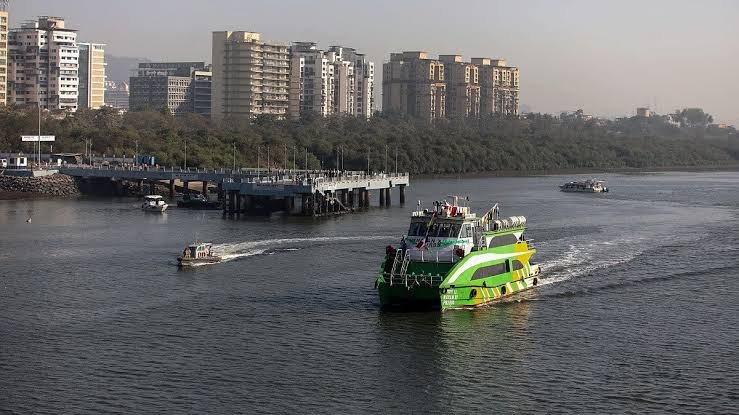Travel Guides & Articles
Now, Sharm And Hurghada Are Off Limits: Foreign Office Warns UK Tourists Of Travel Restrictions In Egypt As It Adds Seven Areas To The ‘No Travel’ List, Here Is All You Need To Know

Published on
July 13, 2025 |
By: TTW News Desk
The UK’s Foreign, Commonwealth & Development Office (FCDO) has issued an updated travel advisory for UK citizens thinking of travelling to Egypt, advising against all but essential travel in seven areas of the country. The new advice reflects growing fears for safety and security in the region – and is set to have huge implications for UK tourism in Egypt, one of the favoured holiday spots in North Africa.
The revised travel warning, covering regions close to the Libyan border and parts of North Sinai, lists specific areas that are now deemed too risky for holidaymakers. The decision is part of continuous safety measures due to political instability, local clashes and possible terrorist attacks. With the likes of popular tourist destinations such as Sharm el Sheikh being a hot-spots for UK holidaymakers, this new guidance is likely to have an effect on holiday bookings and visitor numbers, especially in the country’s historically rich areas.
FCDO Adds Seven Destinations to ‘No Travel’ List
The new FCDO warning details a range of areas in Egypt that holidaymakers should refrain from venturing to unless they need to travel there for essential purposes. These provinces were selected by due to their proximity to volatile areas near Egypt’s borders and also areas facing persistent security challenges. The seven areas on the ‘watch list’ are:
Egypt-Libya Border (20 km) : This location is considered to be at high risk of exposure due to its proximity to Libya, which has experienced political and security turbulence for years. Tourists are also told to shun the area, apart from necessary travel to the town of El Salloum, near the border, which is permitted subject to conditions.
North Sinai: The area has been a battleground for fighting between local militant factions. This remains a problem for overseas visitors, as parts of the Sinai Peninsula are still controlled by armed groups, making regular tourism unsafe.
Northern South Sinai: The FCDO advises against all travel to the northern area of the South Sinai region, except for the St Catherine’s Protectorate, Taba and Nuweibaa and the roads between these locations and the Taba and Nuweibaa border crossings and the Sharm el Sheikh International Airport. Security problems for these areas have been rife, particularly close to the borders.
Western Nile Valley & Nile Delta The region for the western Nile Valley & Nile Delta, with some exceptions, is on the FCDO’s travel advice list too. These parts of Egypt are known for political and security instability, and many foreign tourists visiting the region have been wary over recent years.
Coastal Areas Between the Nile Delta and Marsa Matruh: Portions of the west Nile Valley are currently off limits to travelers, but there are exceptions. Exception were made to the coast between the Nile Delta and Marsa Matruh, as well as to the Faiyum Governorate, non-essential travel is to be allowed to these areas, which are considered to be safer generally.
Siwa Oasis and the surrounding towns: Located near the Libyan border, the Siwa Oasis has historically been a popular tourist destination for its ancient history and picturesque desert vistas. Siwa and its neighbouring oasis towns, Bahariya, Farafra, Dakhla (Mut) and Kharga, are exceptions with the FCDO as they remain open to tourists.
Luxor, Qina, Aswan, Abu Simbel, and the Valley of the Kings: There are travelwarnings only in rare cases for specific areas in Egypt that are popular tourist destinations world-wide known for ancient Egyptian monuments and history. The FCDO has also clarified that these locations, as well as the Valley of the Kings and the classic temples of Abu Simbel, remain some of the country’s safest for visitors. These sites, which are one of Egypt’s leading tourist attractions, can continue to attract international visitors, especially those interested in the ancient history of Egypt.
Exemptions and Exceptions to the Travel Advisory
The travel advisory, updated on Tuesday, identifies a number of regions where no travel is permitted, but also identifies permitted tourist areas under conditions. The FCDO has stressed that many roads and towns are still open for travel, particularly in more stable areas. These include:
Roads linking the desert and the Nile Valley: Road links such as those between Kharga and Baris; Baris and Luxor; and Farafra, Dakhla (Mut) and Kharga will not be affected by the travel ban provided travelers follow the regulations for necessary travel.
Giza and the Bahariya Oasis: Giza, home of the Great Pyramids and an iconic tourist destination in Egypt, is still open to travelers. The roads between the Bahariya Oasis and Siwa are also open to travellers although the FCDO warning advocates caution.
Marsa Matruh-Siwa Road: The overland route connecting the oasis town of Siwa to Marsa Matruh on the Mediterranean coast remains open, but only for essential travel. That will allow visitors to experience Siwa, an important stop on the circuit for travelers interested in the desert landscapes and vestiges of ancient Egypt.
Impact on Tourism in Egypt Profile
Egypt is known for its pyramids, history of civilization and popular tourist destinations including city state such as Cairo, Giza, etc. The FCDO’s new travel advice may have a major impact on tourism in Egypt. For such measures as the travel ban are now in evidence, and prospective travellers may think twice, especially to places that have now been designated as high risk zones. Egypt has long drawn tourists from the UK keen to visit its iconic sites – including the Pyramids of Giza and temples of Luxor – or relax in the resorts on the Red Sea.
Tourism is an economic lifeline for Egypt and the revised travel advice could affect the flow of visitors, particularly in the affected areas. But a number of museums around temple areas are still open, and visitors also flock to the nation’s coastal Mediterranean towns as well as to Luxor and Aswan, where little of the unrest has been felt.
And if Siwa Oasis, one of the country’s relatively off-the-beaten-path destination, can make it on the excluded list, that means that Egypt will do anything to pimp its tours. The government can also concentrate its efforts on making key tourist spots safer and more secure, to keep the interest of foreign tourists in the country.
New Rules to Be Aware for Tourists
UK holidaymakers heading to Egypt should be aware of the latest FCDO advice and be prepared to change their travel plans. Visitors to the country also need to keep up to date with how safe certain regions are, particularly if they are planning on visiting the Sinai Peninsular or the region that borders Libya.
Travelers should also monitor potential shifts in the security environment, as the status of the country is still in flux due to continued challenges. But it is not a wild west free-for-all – checking the foreign office advice before you go, keeping in contact with local authorities and heeding advice on the ground will all be essential to a safe and enjoyable visit.
Conclusion: Egypt Tourism on the Move
Although travel in some parts of Egypt is not recommended by the FCDO, tourism in the country is alive and well and appealing to visitors from across the globe. From the classic sites such as the iconic Valley of the Kings and Abu Simbel, to the government’s commitment to make these areas safe to visit, Egypt continues to represent a unique cultural experience for visitors. As Egypt deals with security demands and raises its profile to remain a top attraction in world tourism, tourists are invited to follow developments and keep tabs on travel advisories to enjoy a safe and pleasant visit.
Tags: Aswan, Cairo, Egypt tourism, Giza, luxor, Mediterranean coast, Middle East Tourism, Nile Valley, north sinai, Sinai Peninsula, Siwa Oasis
Travel Guides & Articles
PM Modi-Xi Jinping meeting: India and China to resume direct flights after five-year hiatus

Air travel between the two countries was halted in early 2020 due to the COVID-19 pandemic and further disrupted following the deadly border clash in the Galwan Valley that year. Since then, passengers and cargo have been rerouted via third countries such as Thailand, Singapore, and Hong Kong, adding substantial time and cost to travel and trade.
Indian Prime Minister Narendra Modi confirmed the move on Saturday, a day beforer the Shanghai Cooperation Organisation (SCO) Summit and his meeting with Chinese President Xi Jinping, stating that both governments had agreed to restart direct flight services as relations between the two nations showed signs of improvement. “We are reopening one of Asia’s most important economic corridors,” Modi said, according to reports, adding that the decision would benefit businesses, students, and families across both countries.
Sharing my remarks during meeting with President Xi Jinping. https://t.co/pw1OAMBWdc
— Narendra Modi (@narendramodi) August 31, 2025
Also read | PM Modi meets Xi Jinping in Tianjin as SCO Summit gets underway
Before the suspension, traffic between India and China was considerable. Before the Pandemic in the financial year 2019, over 816,000 passengers travelled between the two nations, with Indian carriers such as Air India and IndiGo operating hundreds of monthly flights alongside Chinese airlines. Cargo movement was also significant, with nearly 30,000 tonnes shipped annually — higher than the cargo volume between India and the US.
The resumption of direct flights is expected to revitalise trade and tourism, as well as support Indian and Chinese companies with firm business ties. For students and professionals who previously relied on complex transit routes, the resumption of direct services will simplify travel and reduce costs.
No official schedule has yet been released, but aviation authorities in both countries are expected to approve routes in the coming weeks. Industry experts predict that carriers will initially resume limited services before expanding based on demand.
The move comes amid broader efforts to stabilise ties between New Delhi and Beijing, with high-level diplomatic engagements resuming and trade volumes gradually recovering. While tensions remain, the restoration of direct air links is being seen as a positive step toward normalising relations.
Travel Guides & Articles
Purnia Airport set to open next month
The much-anticipated Purnia airport near the IAF airbase at Chunapur, located 10 km from the district headquarters, is expected to begin commercial flight operations by next month. Under the Centre’s Ude Desh ka Aam Nagrik (Udan) scheme, direct flights to Delhi and Kolkata will soon be available. Airports Authority of India (AAI) officials confirmed that the new interim terminal building, spanning 3,000 sq m, is 99% complete, with final finishing touches in progress. The facility, built at a cost of INR 34 crore, is scheduled for inauguration on September 15.
The launch coincides with Prime Minister Narendra Modi’s visit to inaugurate multiple multi-crore projects for Purnia and neighbouring districts. Engineers reported that civil and interior works on the terminal are already complete, with only minor external finishing pending. Construction began in May and was completed in just four months, offering modern passenger amenities with two boarding gates, two arrival gates, and two departure gates.
The terminal will have the capacity to handle 300 passengers during peak hours and will be decorated with local heritage elements such as Manjusha art. AAI officials said additional facilities, including another conveyor belt and boarding gate, are planned for the future. The airside infrastructure will make use of the Indian Air Force’s runway, which stretches 2,743 metres, enabling operations for larger aircraft.
IndiGo has been selected to operate flights on the two proposed routes to Delhi and Kolkata. The airport’s boundary wall, measuring 1,706.8 metres in length and about eight feet in height, is nearing completion, with plastering and painting works progressing quickly. A one-and-a-half-foot-high concertina wire will also be installed on top for enhanced security.
The Bihar government allocated 67 acres of land for the civil enclave on the southern side of the airbase. Alongside the terminal, the development includes an apron, a connecting taxiway, and designated areas for ground support equipment. These facilities aim to ensure smooth aircraft operations and efficient passenger handling.
Access to the new airport will be improved by a four-lane road measuring 930 metres, constructed at a cost of over INR 14 crore. With the project nearly complete, the opening of Purnia airport is set to significantly boost air travel in the Seemanchal region, improving connectivity for residents and supporting economic growth in Bihar’s northeast districts
Travel Guides & Articles
Mumbai’s electric water taxi set for Sept launch

Mumbai’s much-awaited electric water taxi service is set to begin operations on September 22, promising a faster, cleaner, and more comfortable commute between Gateway of India/Mumbai Ferry Wharf and the Jawaharlal Nehru Port Authority (JNPA). The service will replace the existing wooden boats that currently ply the route, cutting travel time from over an hour to less than 40 minutes while offering an eco-friendly alternative.
Bharat Freight Group (BFG), which will manage the operations, has confirmed that two vessels will be introduced in the first phase. One is a hybrid boat powered by solar energy, an electric battery, and a diesel backup, while the other will be fully electric. Both boats can be charged in under an hour, ensuring quick turnaround times for smooth operations. This shift is expected to modernise water-based transport and reduce dependency on fuel-powered vessels.
In the second phase, the fleet will be expanded with four hydrogen-powered boats once the required generators are in place. These vessels will further strengthen Mumbai’s push toward sustainable transportation and align with broader environmental goals. Authorities believe that with this expansion, the water taxi network can become a reliable daily commute option for both office-goers and tourists.
The boats are made of fibre and glass and feature a European design, offering not only improved energy efficiency but also enhanced stability and passenger comfort. This makes them suitable for varied weather conditions and ensures a smoother ride across Mumbai’s busy waterways. The introduction of these vessels marks a significant upgrade over the older fleet in terms of safety and passenger experience.
BFG has also announced plans to expand the service beyond JNPA by adding new routes that will connect South Mumbai to Elephanta Caves, Belapur, Alibaug, and various harbour tourism circuits. This could open up new tourism opportunities and improve connectivity between key coastal destinations in the region.
The launch of Mumbai’s electric water taxi service is being hailed as a milestone in the city’s transport evolution, combining modern technology, environmental responsibility, and improved efficiency. It is expected to ease congestion on roads, offer a scenic travel alternative, and serve as a model for other coastal cities in India looking to modernise their transport infrastructure.
-
Tools & Platforms3 weeks ago
Building Trust in Military AI Starts with Opening the Black Box – War on the Rocks
-

 Ethics & Policy1 month ago
Ethics & Policy1 month agoSDAIA Supports Saudi Arabia’s Leadership in Shaping Global AI Ethics, Policy, and Research – وكالة الأنباء السعودية
-

 Events & Conferences3 months ago
Events & Conferences3 months agoJourney to 1000 models: Scaling Instagram’s recommendation system
-

 Business2 days ago
Business2 days agoThe Guardian view on Trump and the Fed: independence is no substitute for accountability | Editorial
-

 Jobs & Careers2 months ago
Jobs & Careers2 months agoMumbai-based Perplexity Alternative Has 60k+ Users Without Funding
-

 Funding & Business2 months ago
Funding & Business2 months agoKayak and Expedia race to build AI travel agents that turn social posts into itineraries
-

 Education2 months ago
Education2 months agoVEX Robotics launches AI-powered classroom robotics system
-

 Podcasts & Talks2 months ago
Podcasts & Talks2 months agoHappy 4th of July! 🎆 Made with Veo 3 in Gemini
-

 Podcasts & Talks2 months ago
Podcasts & Talks2 months agoOpenAI 🤝 @teamganassi
-

 Jobs & Careers2 months ago
Jobs & Careers2 months agoAstrophel Aerospace Raises ₹6.84 Crore to Build Reusable Launch Vehicle

















